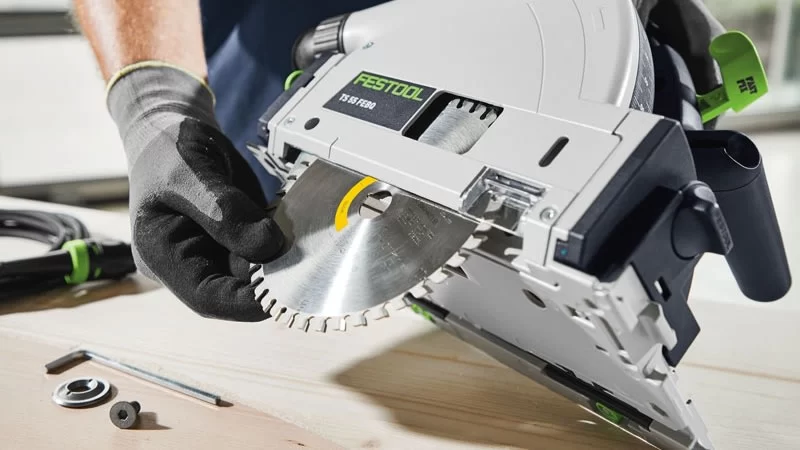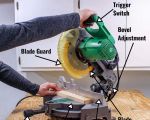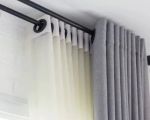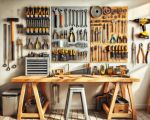
- Choosing the Right Saw Blade for Woodworking Projects
- Understanding Saw Blade Types and Their Uses
- Key Features to Consider When Selecting Woodworking Saw Blades
- Real-World Examples of Saw Blade Performance in Woodworking
- Where to Find the Best Saw Blades for Woodworking Projects
Choosing the Right Saw Blade for Woodworking Projects
When it comes to woodworking, selecting the best saw blades for woodworking projects is one of the most crucial decisions you’ll make. The right blade not only improves the quality of your cuts but also enhances your safety and efficiency. Every woodworking project has its own unique requirements, whether you’re crafting delicate furniture or cutting large timber beams. A blade optimized for precision and durability can make the difference between a professional finish and a frustrating experience filled with rough edges and wasted material.
Woodworking enthusiasts often overlook the importance of blade choice, focusing instead on the power of their saw or the type of wood they are cutting. However, the saw blade is the actual tool that interacts with the wood, so its design and quality directly impact your project’s outcome. From tooth count to blade material, there are many factors to evaluate, and understanding these will help you make an informed purchase that suits your specific woodworking needs.
Understanding the Role of the Saw Blade
A saw blade is much more than a spinning disc; it’s the precision instrument that defines the cut's cleanliness, speed, and safety. For instance, a blade with fewer teeth generally cuts faster but leaves a rougher finish, suitable for framing or rough carpentry. Conversely, blades with higher tooth counts are ideal for fine woodworking, providing smoother edges and reducing the need for sanding.
Understanding Saw Blade Types and Their Uses
There is a variety of saw blades designed specifically for woodworking, each tailored to different tasks. Here’s a breakdown of the most common types you’ll encounter:
1. Crosscut Blades
Crosscut blades have more teeth (typically 60-80) and are designed to cut across the wood grain. They produce clean, smooth cuts perfect for finish carpentry and furniture making.
2. Rip Blades
Rip blades have fewer teeth (around 24-30) and are designed to cut along the grain. They remove material quickly but leave a rougher cut, ideal for framing and structural lumber.
3. Combination Blades
Combination blades strike a balance, with around 40-50 teeth and a tooth pattern suitable for both ripping and crosscutting. These are excellent general-purpose blades for hobbyists and small workshops.
4. Specialty Blades
These include blades designed for plywood, laminate, or other engineered woods. They often have special tooth geometries and coatings to reduce splintering and increase blade life.
Key Features to Consider When Selecting Woodworking Saw Blades
Choosing the best saw blade for woodworking projects involves more than just picking a blade type. Several important features influence performance and longevity:
Tooth Count and Configuration
The number of teeth affects both speed and cut quality. More teeth mean smoother cuts but slower feed rates. The shape and angle of the teeth (such as alternate top bevel or flat top) also impact how the blade cuts through wood fibers.
Material and Coating
High-quality saw blades often use carbide-tipped teeth, which stay sharp longer and resist heat better than steel blades. Additionally, coatings like titanium or non-stick finishes reduce friction and prevent resin build-up.
Blade Diameter and Arbor Size
The blade size must match your saw’s specifications to ensure safe and effective operation. Using the wrong diameter or arbor can cause vibration or unsafe conditions.
Kerf Width
The kerf refers to the width of the cut made by the blade. Thin-kerf blades require less power and produce less waste, making them ideal for portable saws and detailed work.
Real-World Examples of Saw Blade Performance in Woodworking
To illustrate the impact of choosing the right blade, consider the case of a professional carpenter named Mike. Mike was working on a custom cabinetry project that required extremely smooth cuts for a flawless finish. Initially, he used a standard rip blade, resulting in rough edges that needed excessive sanding. After switching to a high-tooth-count crosscut blade from ToolNest’s recommended collection, the quality of his cuts improved dramatically. The smooth edges reduced his finishing time by over 30%, increasing his productivity and client satisfaction.
Another story comes from a hobbyist woodworker, Lisa, who struggled with plywood splintering on the edges of her shelves. After researching saw blades optimized for plywood, she selected a specialty blade with a triple-chip grind and non-stick coating. The difference was clear: cleaner cuts with minimal tear-out, making her woodworking experience more enjoyable and her projects more professional-looking.
Where to Find the Best Saw Blades for Woodworking Projects
Finding the ideal saw blade that fits your woodworking project’s needs can be overwhelming given the countless options available. ToolNest offers a carefully curated selection of the best saw blades for woodworking projects, combining quality, variety, and competitive pricing. Whether you are a seasoned professional or a beginner, their expert guidance and customer service make selecting the right blade straightforward.
By visiting ToolNest, you can access detailed product descriptions, user reviews, and expert advice tailored to your specific saw and woodworking goals. This personalized approach ensures that every purchase is an investment in better cuts and longer-lasting tools.
In conclusion, selecting the best saw blades for woodworking projects requires understanding your project’s demands, blade types, and key features. Investing time in research and choosing the right blade not only enhances the quality of your work but also improves safety and efficiency. For a wide range of trusted options and expert support, ToolNest remains an excellent resource for woodworking enthusiasts looking to elevate their craft.









